
PRESS RELEASE: State Water Agencies, CA Water Data Consortium and EDF Partner on Groundwater Accounting Platform and Data Standards
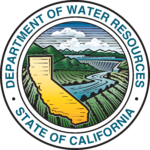 State water agencies, the California Water Data Consortium (Consortium) and Environmental Defense Fund (EDF) announced a new partnership today to make an open-source groundwater accounting platform freely available to help groundwater sustainability agencies manage the transition to sustainable supplies.
State water agencies, the California Water Data Consortium (Consortium) and Environmental Defense Fund (EDF) announced a new partnership today to make an open-source groundwater accounting platform freely available to help groundwater sustainability agencies manage the transition to sustainable supplies.
Collaborative efforts are underway among the Department of Water Resources (DWR), the State Water Resources Control Board (Water Board), the Consortium and EDF to adapt and scale the groundwater accounting platform that was co-developed by EDF and Rosedale-Rio Bravo Water Storage District with technical support from Sitka Technology Group, OpenET, WestWater Research, and Olsson Engineering and funding from the Water Foundation, among other supporters. Use of the groundwater accounting platform is entirely voluntary.
“Our goal is to help groundwater managers more easily and cost-effectively track water use across their agencies and coordinate within and across basins to find the most effective approach for enabling sustainable groundwater management,” said Steven Springhorn, acting deputy director at DWR for statewide groundwater management. “The accounting platform developed by EDF is a valuable tool for local decision making, and the Water Data Consortium is a natural fit for ensuring the platform meets local and state needs long term.”
Click here to continue reading this press release from the Department of Water Resources.
SEE ALSO: 3 ways this accounting platform will help California groundwater agencies transition to sustainable supplies, from the Growing Returns blog
SGMA in the News
Winter flooding of farm fields could ease drought impacts
“When droughts strike, people who rely on shallow domestic wells for their drinking, cooking and washing water are among the first to feel the pain. Aquifers have become depleted from decades of overuse. Drilling deeper is an option for farmers, but prohibitively expensive for low-income residents in disadvantaged communities in California’s San Joaquin Valley. A University of California scientist believes managed aquifer recharge on agricultural lands close to populations with parched wells is a hopeful solution. Helen Dahlke, professor in integrated hydrologic sciences at UC Davis, has been evaluating scenarios for flooding agricultural land when excess water is available during the winter in order to recharge groundwater. … ” Read more from the Western Farm Press here: Winter flooding of farm fields could ease drought impacts
FOR MORE INFORMATION: New Modeling Framework Guides Managed Aquifer Recharge Under Climate Change, Research brief from Water in the West
AEM surveys will assist groundwater management in California
 “Groundwater is a critical source of water for both California farms and communities. The State of California enacted the Sustainable Groundwater Management Act which requires local agencies in high- and medium-priority groundwater basins to develop and implement groundwater sustainability plans. To assist local agencies as they develop these plans, the California Department of Water Resources (DWR) will conduct airborne electromagnetic (AEM) surveys in California’s high- and medium-priority groundwater basins. The project will generate coarse-grid subsurface maps that provide framework information about large-scale aquifer structure. The AEM data supports the development or refinement of hydrogeologic conceptual models as well as helps to identify possible areas for recharging groundwater. “Statewide AEM surveys will further DWR’s technical assistance services supporting local communities as they work to manage their groundwater supply to ensure its reliability,” said Steven Springhorn, acting DWR deputy director of statewide groundwater management. … ” Read more from Environmental Expert here: AEM surveys will assist groundwater management in California
“Groundwater is a critical source of water for both California farms and communities. The State of California enacted the Sustainable Groundwater Management Act which requires local agencies in high- and medium-priority groundwater basins to develop and implement groundwater sustainability plans. To assist local agencies as they develop these plans, the California Department of Water Resources (DWR) will conduct airborne electromagnetic (AEM) surveys in California’s high- and medium-priority groundwater basins. The project will generate coarse-grid subsurface maps that provide framework information about large-scale aquifer structure. The AEM data supports the development or refinement of hydrogeologic conceptual models as well as helps to identify possible areas for recharging groundwater. “Statewide AEM surveys will further DWR’s technical assistance services supporting local communities as they work to manage their groundwater supply to ensure its reliability,” said Steven Springhorn, acting DWR deputy director of statewide groundwater management. … ” Read more from Environmental Expert here: AEM surveys will assist groundwater management in California
MORE INFO: Airborne Electromagnetic (AEM) Surveys, webpage at DWR
Central Valley water districts get OK to sue Dow, Shell over groundwater pollution
“A state appeals court has upheld California’s cleanup standards for a cancer-causing chemical that was added to pesticides and has polluted groundwater in the Central Valley, rejecting challenges by manufacturers that may have to pay the costs. The State Water Resources Control Board’s 2017 mandate for removing nearly all TCP (1,2,3-trichloropropane) from drinking water was contested by the California Manufacturers and Technology Association, representing Dow Chemical Co. and Shell Oil, which included the chemical in worm-killing fumigants widely used by farmers through the 1980s. They argued that the board’s criteria were not “economically feasible,” as required by state law. ... ” Read more from the San Francisco Chronicle here: Central Valley water districts get OK to sue Dow, Shell over groundwater pollution
Fresno Irrigation District expanding groundwater recharge projects with $1.2 million DWR grant
“Fresno Irrigation District’s (FID) Savory Basin Project (Project) was awarded $1.2 million included in a total award of $4.8 million to the Kings Subbasin by the CA Department of Water Resources (DWR) Sustainable Groundwater Management (SGM) Implementation Grant Program. The Project, located within the North Kings Groundwater Sustainability Agency’s (North Kings GSA) boundaries, will help FID achieve its sustainability goals by recharging the groundwater aquifer with FID surface water as mandated by the Sustainable Groundwater Management Act (SGMA). This Project provides a direct benefit to adjacent disadvantaged community, Shady Lakes Mobile Home Park, and several private well owners. … ” Read more from ACWA Water News here: Fresno Irrigation District expanding groundwater recharge projects with $1.2 million DWR grant
Fail: Tule Basin drinking water plan kicked back for a revise
” … Chavez and her family have relied on bottled water since they found out their well water was unsafe in 2015. But sometimes they don’t have enough and are forced to drink the contaminated water. So when Chavez found out about a new program providing free bottled water delivery for families with nitrate-contaminated wells, she was frustrated she hadn’t been contacted. “They’re the ones responsible for reaching out to my family and families that have the same issue as mine,” said Chavez. “It’s very negligent of them.” She referred to the Tule Basin Management Zone, a new organization created to carry out requirements issued last year by the Central Valley Regional Water Quality Control Board to get rural residents with nitrate-laden wells clean drinking water immediately and then work on a longer term fix. … ” Continue reading at SJV Water here: Fail: Tule Basin drinking water plan kicked back for a revise
Paso Robles: Water district funding 30 new groundwater level monitoring wells
“The Estrella-El Pomar-Creston Water District (EPCWD) has announced that it has begun creating a groundwater level monitoring network. Initially, the district has begun work to add 30 new groundwater level monitoring sites, using existing wells, throughout the 37,000-acre district. The campaign marks a significant effort in the basin to move toward groundwater sustainability in the Paso Robles Subbasin, according to the EPCWD. ... ” Read more from the Paso Robles Daily News here: Paso Robles: Water district funding 30 new groundwater level monitoring wells
Paso Robles: Supervisors oppose water district applications
 “The San Luis Obispo County Board of Supervisors sent a letter to the California Water Resources Control Board on May 4 formally opposing the Shandon-San Juan Water District’s (SSJWD) two recent applications for water from Lake Nacimiento and Santa Margarita Lake—a move that puts two partners on the Paso Robles Groundwater Basin at odds with one another. In January, the SSJWD, which represents about 135,000 acres of irrigated agriculture east of Paso Robles, applied to the state for up to 28,000 acre-feet per year of mostly overspill flood water from the two reservoirs, which it proposes to pipe into the Shandon area for groundwater recharge. It filed the applications without collaborating with other agencies in the Paso Basin Cooperative Committee—a body tasked with balancing the overpumped aquifer—including SLO County. ... ” Read more from New Times SLO here: Paso Robles: Supervisors oppose water district applications
“The San Luis Obispo County Board of Supervisors sent a letter to the California Water Resources Control Board on May 4 formally opposing the Shandon-San Juan Water District’s (SSJWD) two recent applications for water from Lake Nacimiento and Santa Margarita Lake—a move that puts two partners on the Paso Robles Groundwater Basin at odds with one another. In January, the SSJWD, which represents about 135,000 acres of irrigated agriculture east of Paso Robles, applied to the state for up to 28,000 acre-feet per year of mostly overspill flood water from the two reservoirs, which it proposes to pipe into the Shandon area for groundwater recharge. It filed the applications without collaborating with other agencies in the Paso Basin Cooperative Committee—a body tasked with balancing the overpumped aquifer—including SLO County. ... ” Read more from New Times SLO here: Paso Robles: Supervisors oppose water district applications
Indian Wells Valley Groundwater Authority to discuss Searles nonpayment Thursday
“The fate of Searles Valley Minerals may hinge on a special virtual meeting of the Indian Wells Valley Groundwater Authority later this week, at least according to SVM’s Camille Anderson. The meeting is scheduled for 10 a.m. Thursday. At it, the IWVGA will discuss how to respond to SVM’s non-payment of the authority’s groundwater replenishment fee. The agenda lists a public hearing on the subject as well as a possible order on SVM for failure to pay and report on its replenishment fees. One presumed action may include shutting off water service to Searles for non-payment. The decision could mean life or death for Searles, according to Anderson. “If they cut off our water we would go out of business,” Anderson told the DI Tuesday. ... ” Read more from the Ridgecrest Independent here: Indian Wells Valley Groundwater Authority to discuss Searles nonpayment Thursday
Indian Valley Groundwater Authority threatens to cut off water for only U.S.-headquartered company supplying vaccine vials

“The Indian Wells Valley Groundwater Authority (Authority) conducted a public hearing Thursday to determine whether to shut off the water supply to Searles Valley Minerals Inc. (Searles) for nonpayment of an exorbitant, unlawful and arbitrary fee that threatens the existence of Searles, a company that has supported the local economy with pioneering technologies and good-paying jobs since its founding in 1873. The Authority ultimately recognized that it didn’t have enough information and postponed any decision. “The Indian Wells Valley Groundwater Authority’s board of directors rightly decided that rather than rush forward with a vote, it was wise to take time to better understand how local residents, particularly senior citizens and vulnerable populations who have already been affected by the pandemic and recent earthquakes, could be impacted by a decision to shut off Searles’ water supply,” said Burnell Blanchard, Vice President of Operations for Searles. ... ” Click here to read the full press release from Save Searles.
Indian Wells Valley: New report indicates slower groundwater decline in valley basin
“The annual report for the valley’s Groundwater Sustainability Plan suggests that the Indian Wells Valley groundwater table is declining on average by some 8 inches per year – in stark contrast to the 1.5- to 2-foot figure that the IWV Groundwater Authority has broadcasted over the years. The report – delivered by Heather Steele of Stetson Engineers during the GA’s April 14 meeting – includes new information on the El Paso sub basin in the southeastern area of the valley, which has risen an estimated 18,000 acre-feet since 2015. While most other areas of the basin are experiencing more substantial decline, the El Paso findings have a significant impact on the basin-wide average. … ” Read more from The News Review here: Indian Wells Valley: New report indicates slower groundwater decline in valley basin
Can Managed Aquifer Recharge Mitigate Drought Impacts on California’s Irrigated Agriculture? The Role for Institutions and Policies
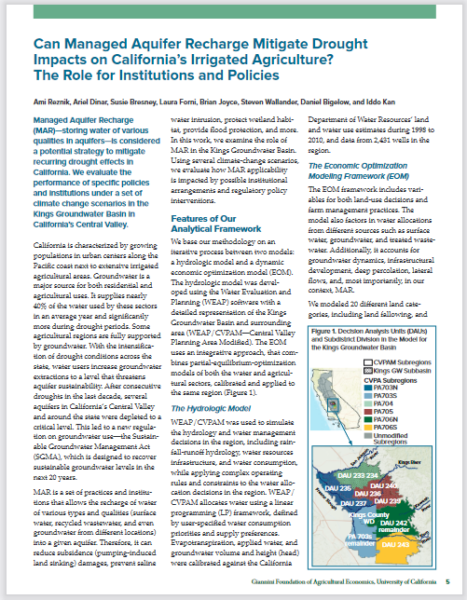 MAR is a set of practices and institutions that allows the recharge of water of various types and qualities (surface water, recycled wastewater, and even groundwater from different locations) into a given aquifer. Therefore, it can reduce subsidence (pumping-induced land sinking) damages, prevent saline water intrusion, protect wetland habitat, provide flood protection, and more.
MAR is a set of practices and institutions that allows the recharge of water of various types and qualities (surface water, recycled wastewater, and even groundwater from different locations) into a given aquifer. Therefore, it can reduce subsidence (pumping-induced land sinking) damages, prevent saline water intrusion, protect wetland habitat, provide flood protection, and more.
In this work, we examine the role of MAR in the Kings Groundwater Basin. Using several climate-change scenarios, we evaluate how MAR applicability is impacted by possible institutional arrangements and regulatory policy interventions.
Click here to read this paper from the Giannini Foundation of Agricultural Economics, University of California.
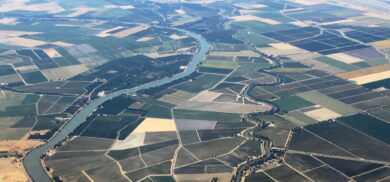
New Stanford-designed tool could guide floodwater management and combat ongoing drought
Floodwaters are not what most people consider a blessing. But they could help remedy California’s increasingly parched groundwater systems, according to a new Stanford-led study. The research, published in Science Advances, develops a framework to calculate future floodwater volumes under a changing climate and identifies areas where investments in California’s aging water infrastructure could amplify groundwater recharge. As the state grapples with more intense storms and droughts, stowing away floodwaters would not only reduce flood risks but also build more water reserves for drier times.
“This is the first comprehensive assessment of floodwater recharge potential in California under climate change,” said study lead author Xiaogang He, an assistant professor in civil and environmental engineering at the National University of Singapore who pursued the research as a postdoctoral fellow at Stanford’s Program on Water in the West.
Analysis of 31 GSPs in Critically Overdrafted Basins
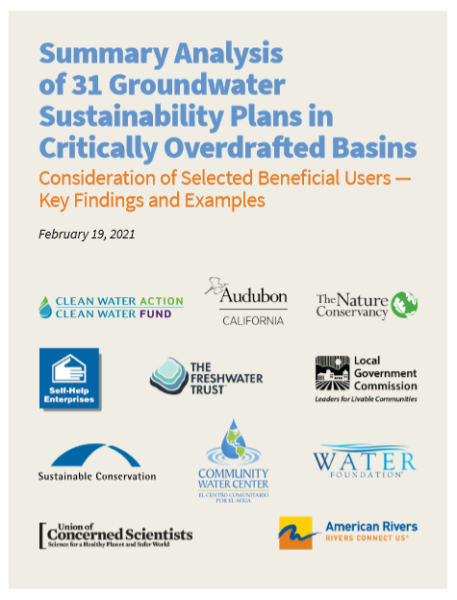 One of the key criteria that the Department of Water Resources (DWR) must consider when evaluating whether a GSP is likely to achieve the sustainability goal for the basin is “Whether the interests of the beneficial uses and users of groundwater in the basin, and the land uses and property interests potentially affected by the use of groundwater in the basin, have been considered” (23 California Code of Regulations [CCR] § 355.4(b)(4)).
One of the key criteria that the Department of Water Resources (DWR) must consider when evaluating whether a GSP is likely to achieve the sustainability goal for the basin is “Whether the interests of the beneficial uses and users of groundwater in the basin, and the land uses and property interests potentially affected by the use of groundwater in the basin, have been considered” (23 California Code of Regulations [CCR] § 355.4(b)(4)).
In regard to this and other statutory requirements to consider and address the needs of all beneficial users in GSPs, a group of NGOs, with the support of Water Foundation, collectively reviewed 31 GSPs in 16 critically overdrafted basins and subbasins.
The organizations collectively submitted detailed formal comment letters to each GSA on the public draft GSPs as well as detailed formal comment letters to DWR on the final GSP documents, within the formal public review period.
The reviews were prioritized towards those GSPs that were considered to be of high priority by our organizations due to the presence of: (1) small drinking water systems, (2) groundwater dependent ecosystems (GDEs), and (3) DACs. Prioritization also considered coverage and interest by the respective organizations, with the goal of selecting at least one GSP per critically overdrafted basin.
Although we did not review all 46 submitted GSPs, the findings from our analysis are both valuable to inform GSP implementation and updates in critically overdrafted basins, and to inform the development and review of GSPs currently being drafted for the remaining high- and medium-priority basins. For each of the five key elements, the following sections discuss: (1) the regulatory basis for consideration of beneficial users, (2) a summary of our review findings, (3) a discussion of how the GSPs should have more adequately addressed the key issues, and (4) a selection of “Model GSP Elements” from reviewed GSPs.
It is the goal of this analysis to share our findings in order to help inform and improve the development of GSPs for non-critically overdrafted basins, as well as to inform opportunities for improvement of GSPs for critically overdrafted basins.
For more analysis on the 2020 GSPs, visit the 2020 GSP page at the Groundwater Exchange.
NEW BOOK: Rewilding Agricultural Landscapes
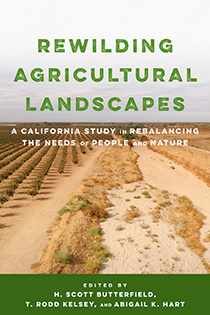 As the world population grows, so does the demand for food, putting unprecedented pressure on agricultural lands. At the same time, climate change, soil degradation, and water scarcity mean that productivity of many of these lands is deteriorating. In many desert dryland regions, drinking wells are drying up and the land above them is sinking, soil salinity is increasing, and poor air quality is contributing to health problems in farm communities. “Rewilding” the least productive of these cultivated landscapes offers a sensible way to reverse the damage from intensive agriculture. These ecological restoration efforts can recover natural diversity while guaranteeing the long-term sustainability of the remaining farms and the communities they support.
As the world population grows, so does the demand for food, putting unprecedented pressure on agricultural lands. At the same time, climate change, soil degradation, and water scarcity mean that productivity of many of these lands is deteriorating. In many desert dryland regions, drinking wells are drying up and the land above them is sinking, soil salinity is increasing, and poor air quality is contributing to health problems in farm communities. “Rewilding” the least productive of these cultivated landscapes offers a sensible way to reverse the damage from intensive agriculture. These ecological restoration efforts can recover natural diversity while guaranteeing the long-term sustainability of the remaining farms and the communities they support.
This accessibly written, groundbreaking contributed volume is the first to examine in detail what it would take to retire eligible farmland and restore functioning natural ecosystems. Rewilding Agricultural Landscapes uses the southern Central Valley of California, which is one of the most productive and important agricultural regions in the world, as a case study for returning a balance to agricultural lands and natural ecosystems. This project—one of the largest rewilding studies of its kind in dryland ecosystems—has shown that rewilding can slow desertification and provide ecosystem services, such as recharged aquifers, cleaner air, and stabilized soils, to nearby farms and communities. Chapters examine what scientists have learned about the natural history of this dryland area, how retired farmland can be successfully restored to its natural wild state, and the socioeconomic and political benefits of doing so. The book concludes with a vision of a region restored to ecological balance and equipped for inevitable climate change, allowing nature and people to prosper. The editors position the book as a case study with a programmatic approach and straightforward lessons that can be applied in similar regions around the world.
The lessons in Rewilding Agricultural Landscapes will be useful to conservation leaders, policymakers, groundwater agencies, and water managers looking for inspiration and practical advice solving the complicated issues of agricultural sustainability and water management.
Groundwater Perspectives: Vickie Ortiz with Fairmead Community & Friends
 While most Californians enjoy the convenience of having water to drink, cook and clean, many communities, including the small underrepresented communities in California’s San Joaquin Valley, face water scarcity challenges. In Fairmead, CA, an unincorporated community 12 miles north of Madera, CA, there are approximately 1,400 residents, with 200 residents connected to the community well and the remaining residents on domestic private wells. Though demographics have shifted, Fairmead continues to be a predominantly community of color. In the 1950’s and 1960’s Fairmead was primarily African American. Today, the community is approximately 70% Hispanic and 7% African American.
While most Californians enjoy the convenience of having water to drink, cook and clean, many communities, including the small underrepresented communities in California’s San Joaquin Valley, face water scarcity challenges. In Fairmead, CA, an unincorporated community 12 miles north of Madera, CA, there are approximately 1,400 residents, with 200 residents connected to the community well and the remaining residents on domestic private wells. Though demographics have shifted, Fairmead continues to be a predominantly community of color. In the 1950’s and 1960’s Fairmead was primarily African American. Today, the community is approximately 70% Hispanic and 7% African American.
The community of Fairmead was hard hit by the last statewide drought which lasted between 2012 and 2016. To this day, Fairmead continues to experience the impacts of declining groundwater levels. Victoria “Vickie” Ortiz and her family experienced first-hand the water challenges exacerbated by the most recent drought. In the summer of 2016, Vickie’s well went dry for over a year and a half. Unfortunately, this did not come as a surprise, as many of her neighbors with shallow wells had also gone dry. A growing demand of water for crop irrigation, coupled with the drought, led to groundwater overdraft.
NOW AVAILABLE: Translated SGMA materials from DWR
 DWR has new SGMA-related materials available in Spanish, Punjabi, and Hmong.
DWR has new SGMA-related materials available in Spanish, Punjabi, and Hmong.
VIDEO: “Groundwater: California’s Vital Resource” now available in Spanish, Punjabi and Hmong.
VIDEO: DWR’s assistance role in groundwater management in English and Spanish.
Draft of California’s Groundwater (Bulletin 118) Highlights document in Spanish and English
Frequently Asked Questions on California’s Groundwater – Update 2020:
California’s Groundwater – Update 2020 Fact Sheet
SGMA in the News
SGMA assistance bill moving through legislative process
“Assembly Bill 350 seeks to help farmers and ranchers navigate the implementation of the Sustainable Groundwater Management Act (SGMA). The SGMA assistance bill would provide funding for technical support for producers to help with compliance. Introduced by Assemblymember Carlos Villapudua, the bill is being sponsored by American Farmland Trust (AFT). The legislation was passed out of the Assembly Agriculture Committee with a unanimous vote and is being heard in the Assembly Water, Parks, and Wildlife Committee beginning April 26. … ” Read more from Ag Net West here: SGMA assistance bill moving through legislative process
DWR awards $26 million in grants to support critically overdrafted groundwater basins
 “The Department of Water Resources (DWR) today awarded $26 million in grant funding for capital project investments to improve water supply security, water quality and the reliability of domestic wells – advancing access to safe, affordable drinking water. This funding provides important assistance for successful local implementation of the Sustainable Groundwater Management Act (SGMA), which establishes a framework for managing the state’s groundwater resources and will help California be better prepared for longer, more severe droughts. “California’s current drought conditions following a second consecutive dry year speak to the importance of managing our groundwater for long-term reliability,” said DWR Director Karla Nemeth. “Today’s funding awards further the state’s support for local leaders as they manage their groundwater supplies, particularly supporting communities at risk of drought impacts.” … ” Read more from the Department of Water Resources here: DWR awards $26 million in grants to support critically overdrafted groundwater basins
“The Department of Water Resources (DWR) today awarded $26 million in grant funding for capital project investments to improve water supply security, water quality and the reliability of domestic wells – advancing access to safe, affordable drinking water. This funding provides important assistance for successful local implementation of the Sustainable Groundwater Management Act (SGMA), which establishes a framework for managing the state’s groundwater resources and will help California be better prepared for longer, more severe droughts. “California’s current drought conditions following a second consecutive dry year speak to the importance of managing our groundwater for long-term reliability,” said DWR Director Karla Nemeth. “Today’s funding awards further the state’s support for local leaders as they manage their groundwater supplies, particularly supporting communities at risk of drought impacts.” … ” Read more from the Department of Water Resources here: DWR awards $26 million in grants to support critically overdrafted groundwater basins
Irrigation issue report uncovers opportunity for growers to conserve water and increase profits
“Ceres Imaging, the irrigation performance management provider that uses aerial imagery and data analytics to help growers improve their irrigation practice, has released a study quantifying the extent and impact of drip irrigation issues in agriculture. Over the last several decades, a shift from spray and flood irrigation to more efficient drip irrigation systems has helped reduce water waste by specialty agriculture. However, environmental pressures and new regulations—such as California’s Sustainable Groundwater Management Act (SGMA)—mean that growers must now become even more efficient. This new report finds that there is significant opportunity for growers to increase farm profits and conserve water by quickly detecting and correcting common issues like plugs, leaks and pressure issues. ... ” C0ntinue reading this press release from Ceres Imaging at Cision here: Irrigation issue report uncovers opportunity for growers to conserve water and increase profits
Wells dry up, crops imperiled, workers in limbo as California drought grips San Joaquin Valley
 “As yet another season of drought returns to California, the mood has grown increasingly grim across the vast and fertile San Joaquin Valley. Renowned for its bounty of dairies, row crops, grapes, almonds, pistachios and fruit trees, this agricultural heartland is still reeling from the effects of the last punishing drought, which left the region geologically depressed and mentally traumatized. Now, as the valley braces for another dry spell of undetermined duration, some are openly questioning the future of farming here, even as legislative representatives call on Gov. Gavin Newsom to declare a drought emergency. Many small, predominantly Latino communities also face the risk of having their wells run dry. … ” Read more from the LA Times here: Wells dry up, crops imperiled, workers in limbo as California drought grips San Joaquin Valley
“As yet another season of drought returns to California, the mood has grown increasingly grim across the vast and fertile San Joaquin Valley. Renowned for its bounty of dairies, row crops, grapes, almonds, pistachios and fruit trees, this agricultural heartland is still reeling from the effects of the last punishing drought, which left the region geologically depressed and mentally traumatized. Now, as the valley braces for another dry spell of undetermined duration, some are openly questioning the future of farming here, even as legislative representatives call on Gov. Gavin Newsom to declare a drought emergency. Many small, predominantly Latino communities also face the risk of having their wells run dry. … ” Read more from the LA Times here: Wells dry up, crops imperiled, workers in limbo as California drought grips San Joaquin Valley
Satellites detect groundwater recharge for San Joaquin Valley
“Groundwater recharge information is critical to groundwater modeling and management but is hard to observe and evaluate over large areas. Neely et al. [2021] explore the possibility to assess aquifer flow dynamics (recharge and discharge) by evaluating spatial patterns of the amplitude and phase of seasonal deformation across the San Joaquin Valley in California for consecutive dry (2016) and wet (2017) water years. … ” Read more from EOS here: Satellites detect groundwater recharge for San Joaquin Valley
Solving the nitrogen puzzle: Measuring groundwater pollution from agriculture
” … Harter, a member of the Soil Science Society of America, is trying to solve one of the most complex puzzles in farming: how to track nitrate as it moves through farm fields. His research was recently published in Vadose Zone Journal, a publication of the Soil Science Society of America. Scientists have tried for years to predict how nitrate will flow from the surface into groundwater. That information can help farmers balance fertilizing their crops with protecting the water they and others rely on. But there are many challenges. The types of soil, crops and fertilizers can all affect this slow process. So Harter and his team designed one of the most detailed studies yet. Across a single 140-acre California almond orchard, they gathered 20 deep soil samples and installed wells to measure groundwater. Few studies have been so detailed across such a small plot of land. … ” Read more from PhysOrg here: Solving the nitrogen puzzle: Measuring groundwater pollution from agriculture
California wells will go dry this summer. ‘Alarm bells are sounding’ in the Valley
“Thousands of wells that bring water to San Joaquin Valley homes are at risk of drying up this summer, leaving families without running water for drinking, cleaning and bathing. While no one knows the extent of the threat from this second year of drought conditions, Jonathan Nelson with the Community Water Center says “the alarm bells are sounding.” Homes, farms and entire communities that rely on shallow wells as their only source of water are vulnerable to declining groundwater levels from dry conditions and agricultural pumping. ... ” Read more from the Fresno Bee here: California wells will go dry this summer. ‘Alarm bells are sounding’ in the Valley
Creating a place for nature in the San Joaquin Valley
“The San Joaquin Valley’s quest for groundwater sustainability will result in large amounts of irrigated agricultural lands being retired. A new book explores how some of these lands could be restored to natural areas that bring multiple benefits. We talked to Scott Butterfield, a senior scientist at The Nature Conservancy and one of the book’s editors, about this vision. PPIC: The book describes a vision for “rewilding” retired agricultural land. How might this work in the San Joaquin Valley? SCOTT BUTTERFIELD: “Rewilding” in the context of the San Joaquin Valley means creating functional ecosystems that support a suite of native plants and animals. We’re thinking about how to repurpose the agricultural lands that are most at threat of being retired under the Sustainable Groundwater Management Act (SGMA) or for other reasons—lands where farming is likely no longer sustainable. … ” Continue reading at the PPIC here: Creating a place for nature in the San Joaquin Valley
San Luis Obispo County sticks with plan for new Paso Robles water basin rules
 “San Luis Obispo County supervisors are proceeding with a new regulatory framework for pumping water in the Paso Robles Groundwater Basin that organized agriculture opposes. The Board of Supervisors voted 3-2 on April 6 to move ahead on an environmental impact report for a proposed ordinance that would replace the existing ordinance, which essentially prohibits increased pumping from the struggling North County aquifer. The new ordinance would allow a higher level of groundwater use for hopeful small farmers—allowing up to 25 acre-feet per year of unchecked pumping per property, instead of the 5 acre-feet per year currently allowed. ... ” Read more from New Times SLO here: San Luis Obispo County sticks with plan for new Paso Robles water basin rules
“San Luis Obispo County supervisors are proceeding with a new regulatory framework for pumping water in the Paso Robles Groundwater Basin that organized agriculture opposes. The Board of Supervisors voted 3-2 on April 6 to move ahead on an environmental impact report for a proposed ordinance that would replace the existing ordinance, which essentially prohibits increased pumping from the struggling North County aquifer. The new ordinance would allow a higher level of groundwater use for hopeful small farmers—allowing up to 25 acre-feet per year of unchecked pumping per property, instead of the 5 acre-feet per year currently allowed. ... ” Read more from New Times SLO here: San Luis Obispo County sticks with plan for new Paso Robles water basin rules
New front in Santa Barbara County’s pot wars
“Santa Barbara County’s most depleted water basin, the Cuyama Valley, is fast becoming the latest battleground in the fight over how — and whether — to address the negative impacts of the lucrative cannabis industry on farming and residential communities. The giant groundwater basin underlying this sparsely populated, heavily farmed, economically depressed valley is one of California’s 21 most critically over-drafted basins and the only one outside the Central Valley. For 75 years, the Cuyama Valley has been a mecca for water-intensive farming on an industrial scale — first, alfalfa, and now, carrots, a $69 million annual crop. Now there’s a newcomer on the block. More than 740 acres of outdoor cannabis cultivation has been proposed for the Cuyama Valley and is under review for zoning permits, county planners say. The industry is poised to drop new straws into the declining basin, where some of the well water is 1,000 feet deep and 30,000 years old — so old, it’s known as “fossil water.” … ” Read more from the Santa Barbara Independent here: New front in Santa Barbara County’s pot wars
New report identifies major gaps in SGMA, provides recommendations
 “In 2014, California’s landmark Sustainable Groundwater Management Act (SGMA) promised comprehensive management of California’s groundwater. The report, based on joint analysis by Stanford University’s Water in the West and The Nature Conservancy, finds that SGMA actually suffers from several major gaps in its coverage.
“In 2014, California’s landmark Sustainable Groundwater Management Act (SGMA) promised comprehensive management of California’s groundwater. The report, based on joint analysis by Stanford University’s Water in the West and The Nature Conservancy, finds that SGMA actually suffers from several major gaps in its coverage.
Indeed, SGMA currently protects less than two percent of California’s groundwater. While SGMA covers those groundwater basins where the vast majority of pumping today occurs, it does not protect many other important groundwater sources, leaving that groundwater at risk of over-pumping, now and in the future, with no state oversight to safeguard rural domestic wells, sensitive habitats, and other beneficial uses of water.
This report, Mind the Gaps: The Case for Truly Comprehensive Sustainable Groundwater Management, details SGMA’s gaps and their consequences and recommends several ways to remedy these gaps. The gaps largely stem from the ways in which the California Department of Water Resources (DWR) defines and prioritizes groundwater basins in Bulletin 118 (California’s Groundwater). … ”
Read the report here: Mind the Gaps: The Case for Truly Comprehensive Sustainable Groundwater Management
